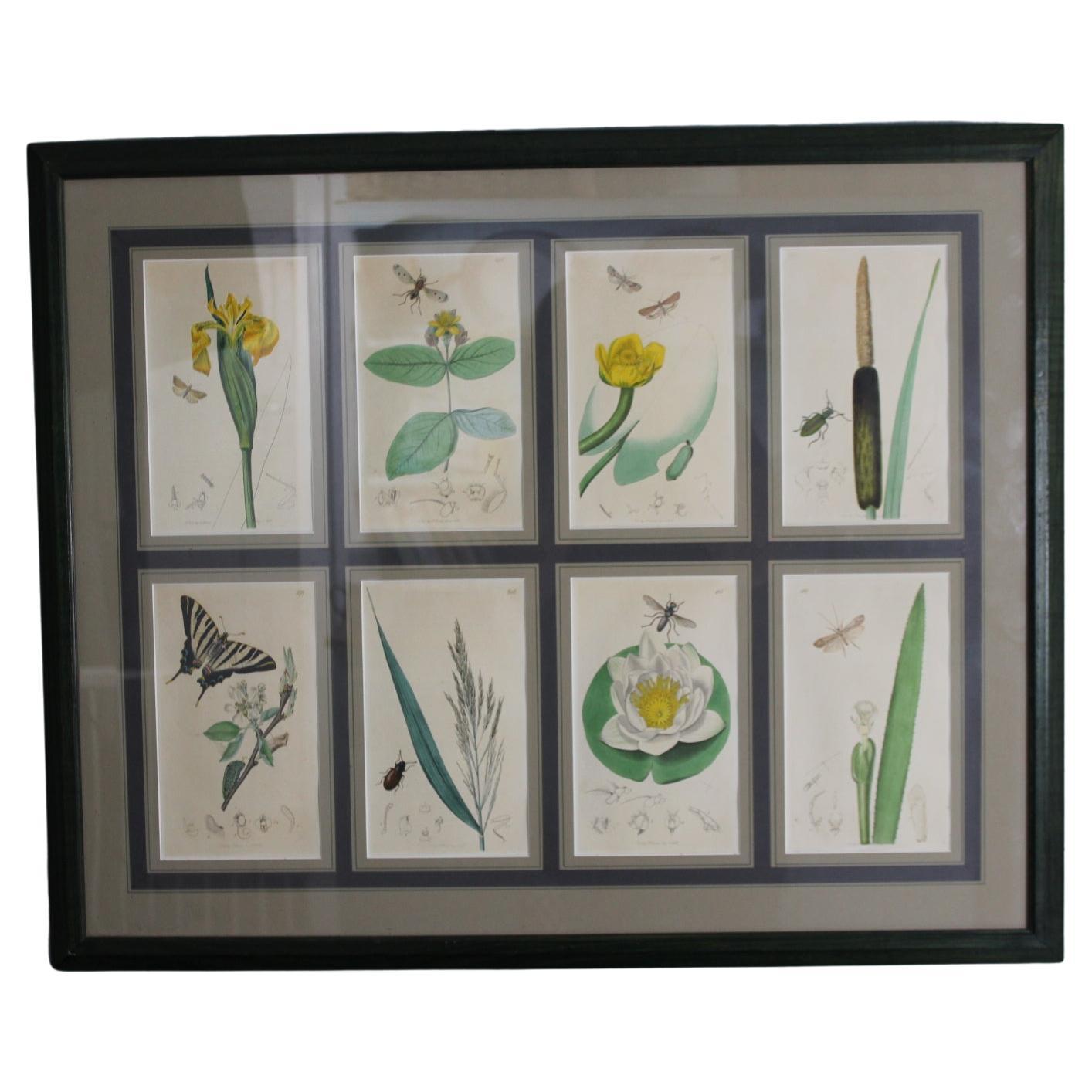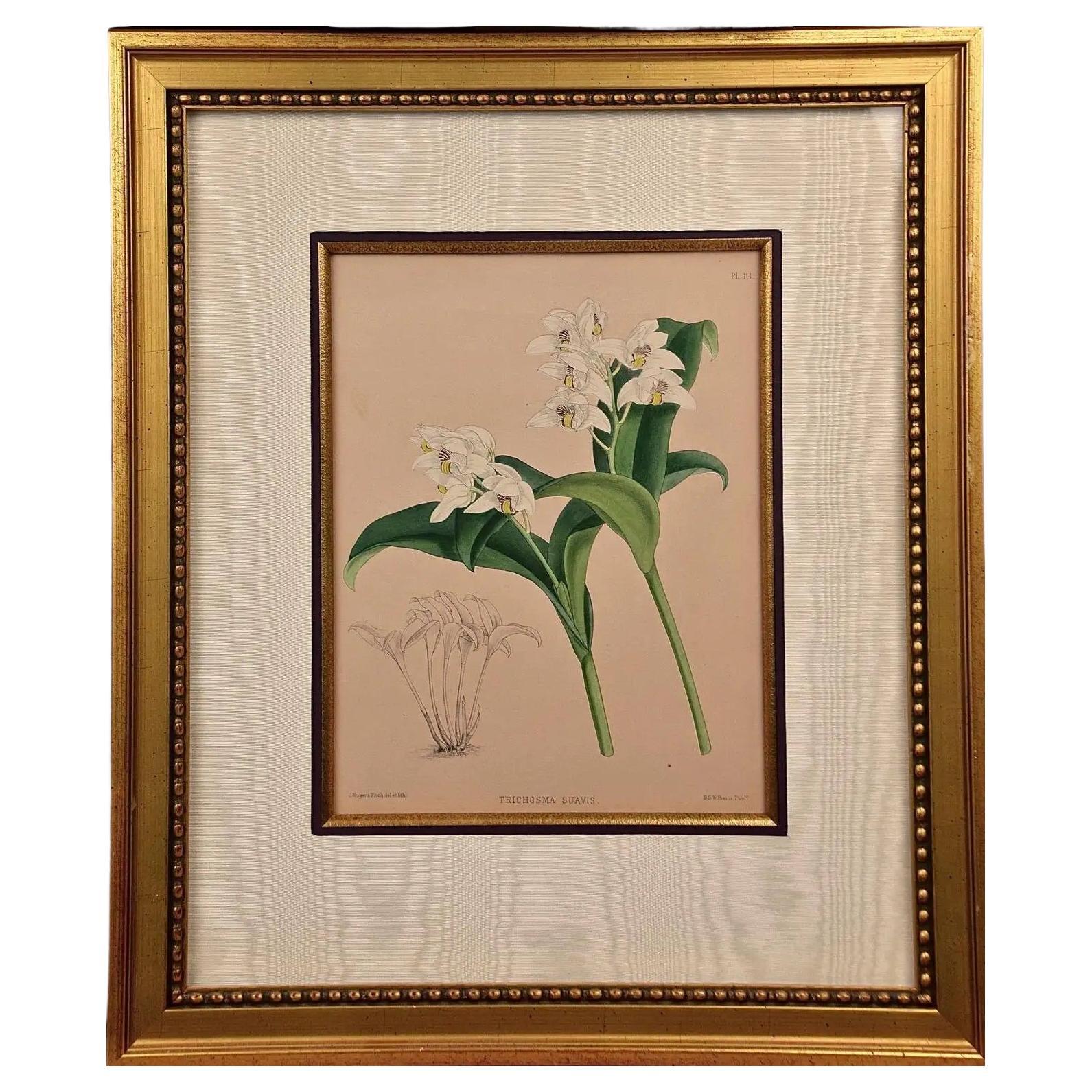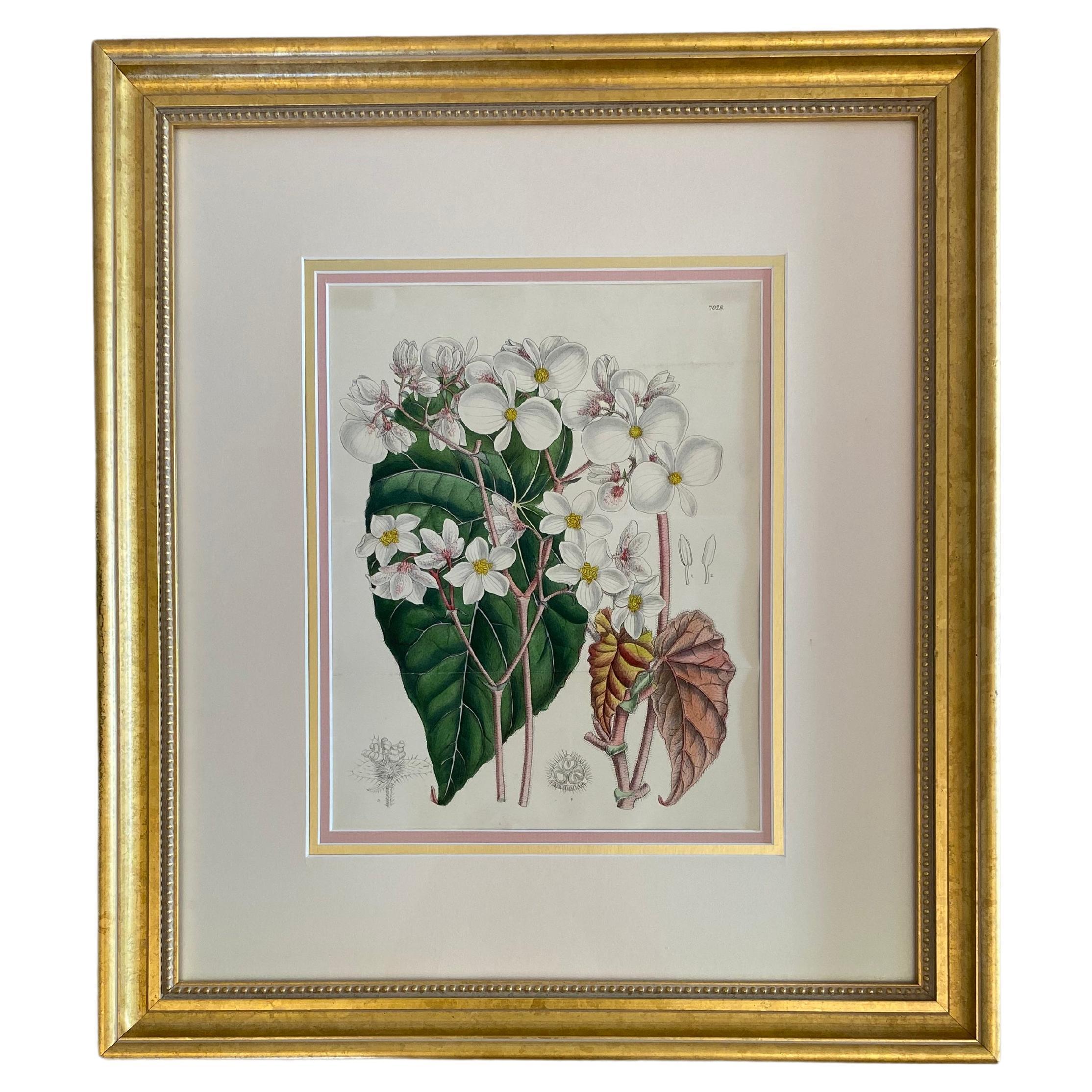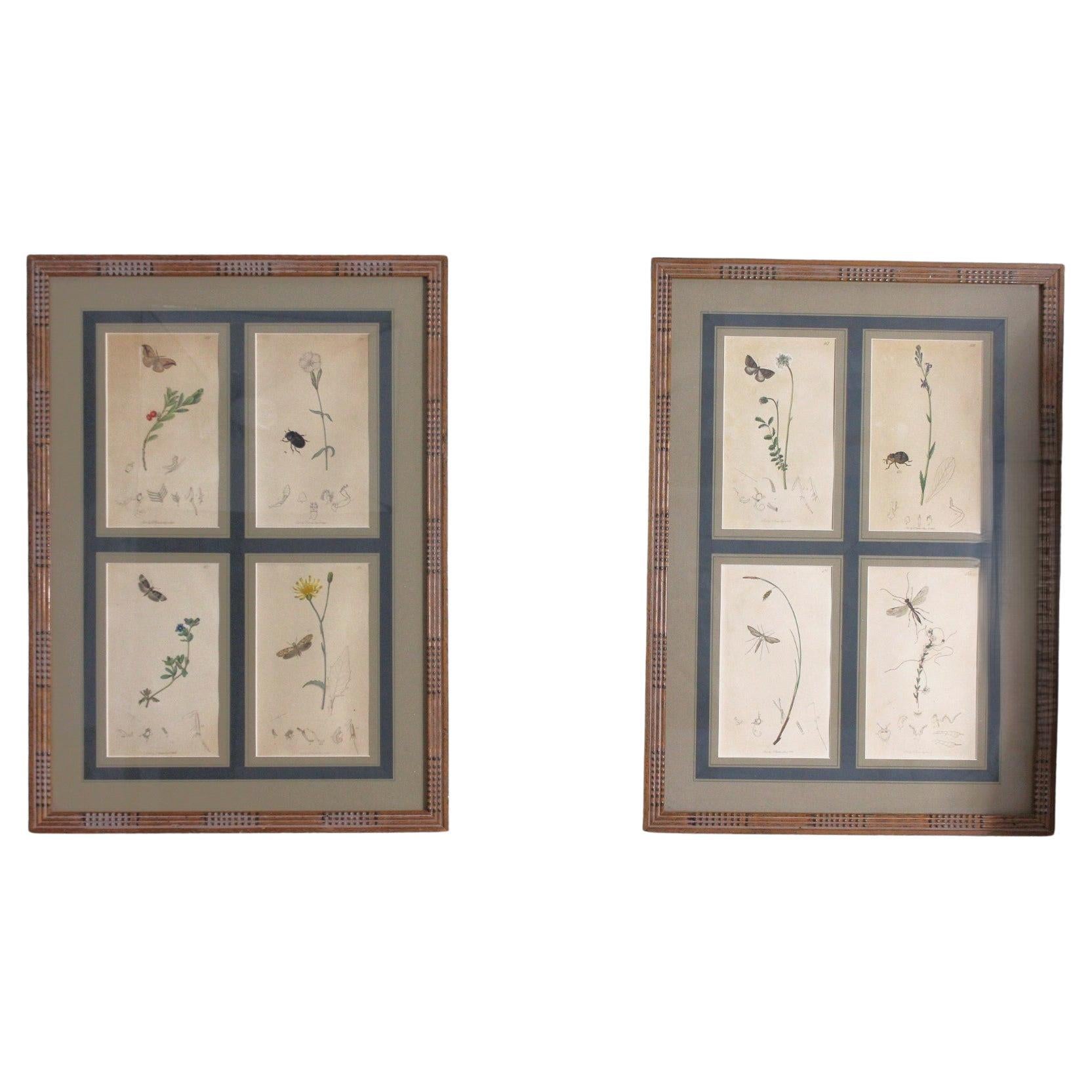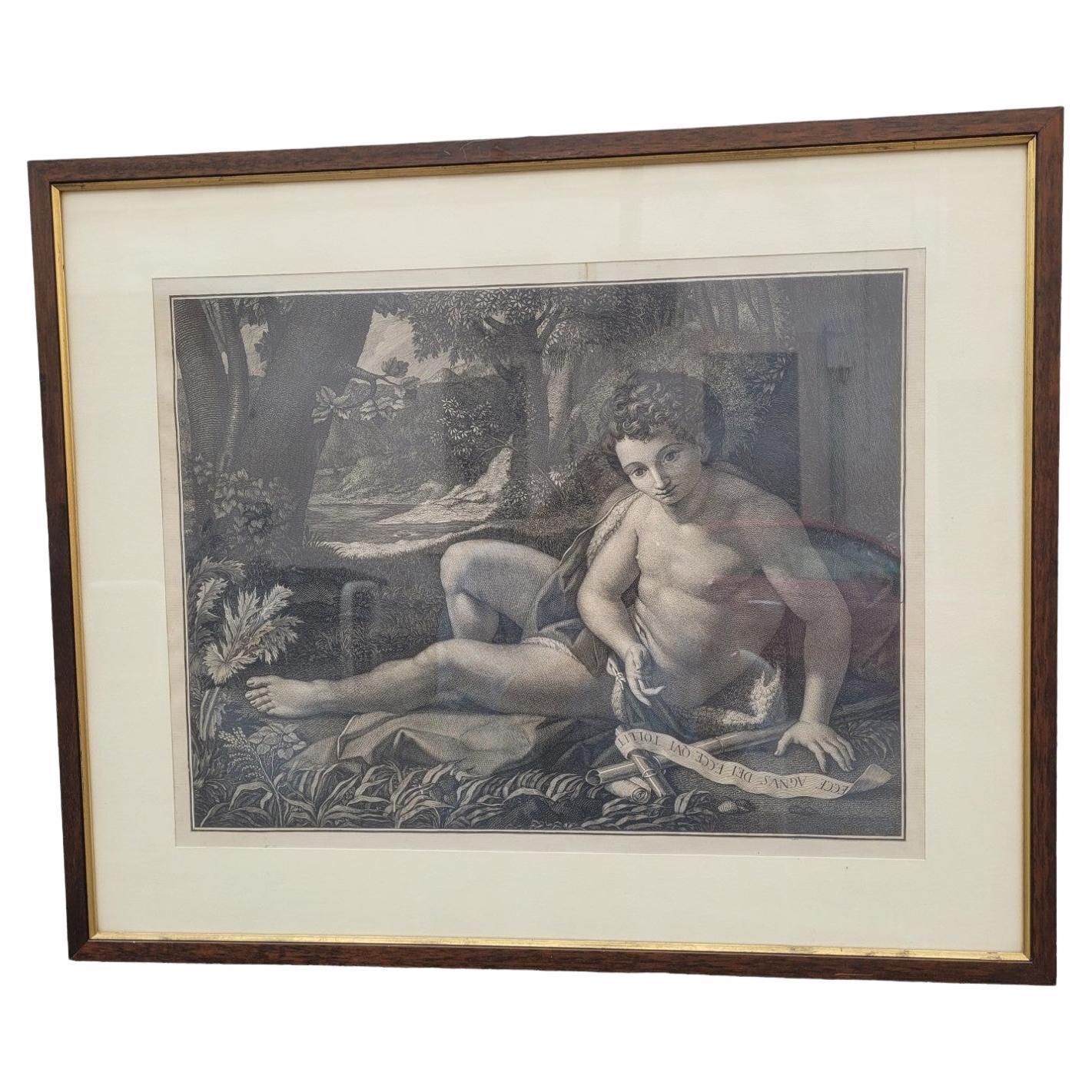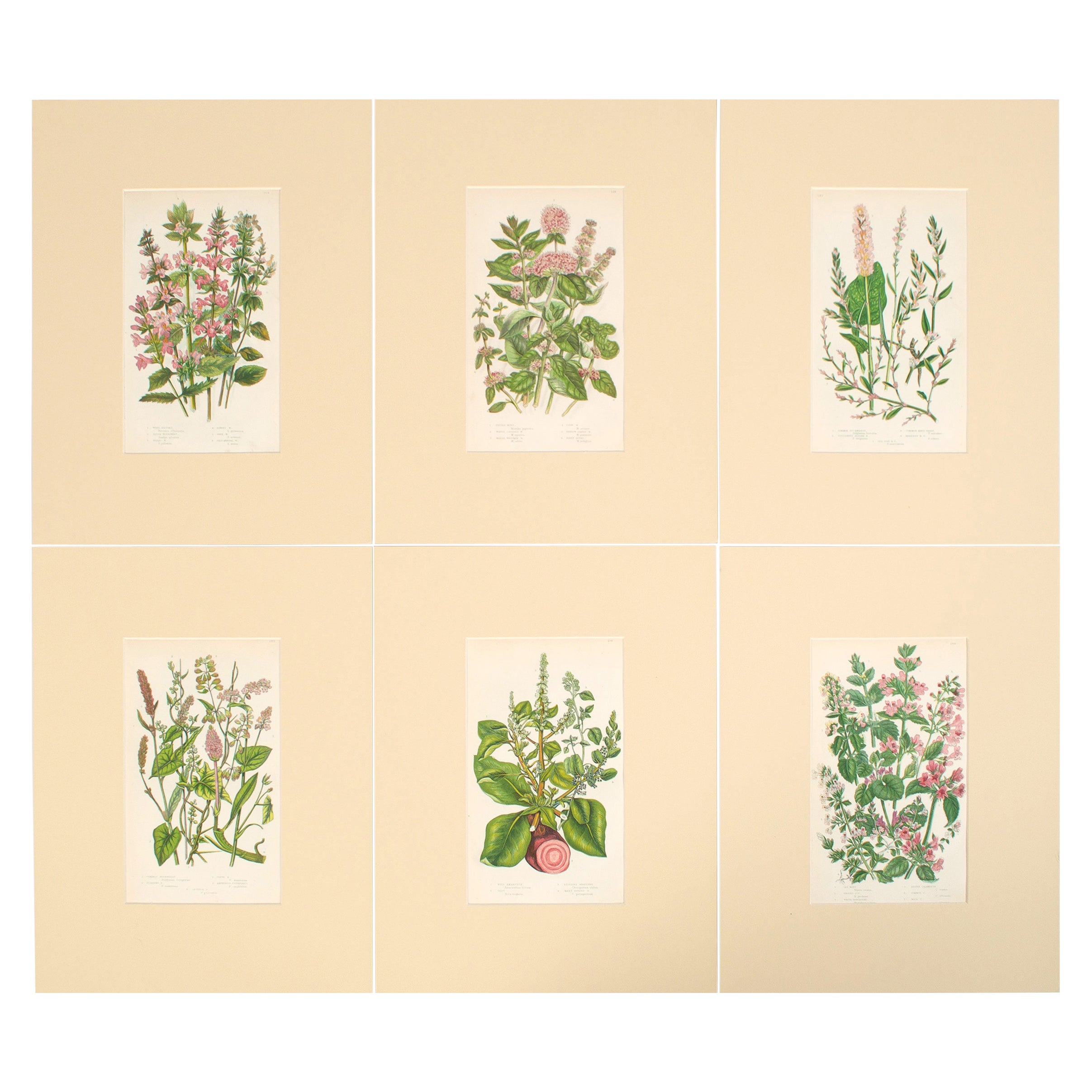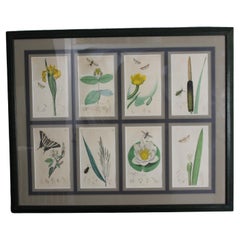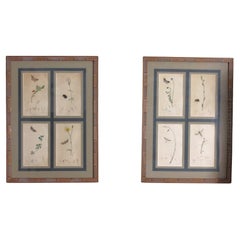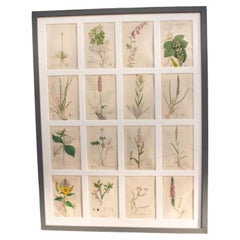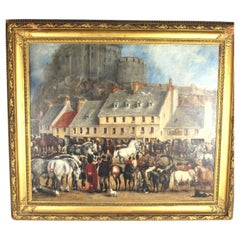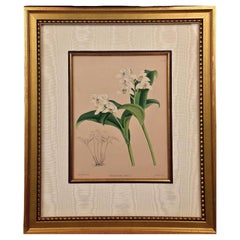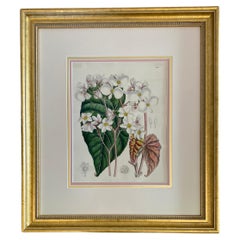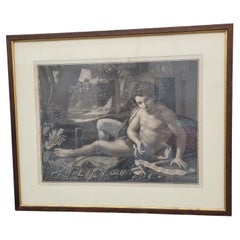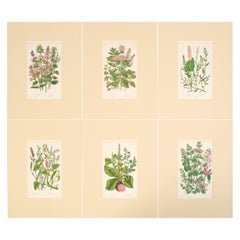Artículos similares a Botanical Engravings by John Curtis 19th century
¿Quieres más imágenes o vídeos?
Solicita imágenes o vídeos adicionales al vendedor
1 de 11
Botanical Engravings by John Curtis 19th century
Acerca del artículo
19th Century Botanical Engravings: A Timeless Art Form
The Legacy of John Curtis and 19th-Century Botanical Engravings
🖋 Provenance Story – 19th Century Botanical Engravings with Insects, after John Curtis
These prints came from one of those treasure-hunt mornings — a private viewing at a longstanding dealer’s flat in Bloomsbury, stacked wall-to-wall with portfolios. In the corner, bound in archival sleeves and nearly forgotten, was a near-complete set of 19th-century botanical engravings — not just florals, but exquisite examples with entomological studies woven in: beetles nestled into petals, butterflies brushing pollen from stamens. Scientific. Romantic. Utterly mesmerising.
At the bottom of several plates was the unmistakable signature: J. Curtis. John Curtis, the renowned illustrator behind the Botanical Magazine, is a name synonymous with Victorian natural history and fine draftsmanship. His engravings — hand-coloured, scientifically meticulous — were once published to accompany botanical texts but quickly became collectable in their own right. These weren’t just records. They were declarations of awe for the natural world.
What made these particular pieces stand out was the inclusion of insects. It elevates each work, not just a study of flora, but an entire micro-ecosystem. Delicate, deeply observational, and full of movement. Each one feels like a moment captured rather than a specimen studied.
We’ve conserved them simply: mounted in minimalist, modern frames that allow the engraving to breathe — to be art, not just an archival reference. And they work anywhere. In modernist lofts, soft-toned bathrooms, layered gallery walls, or home offices that crave calm.
These are more than decorative prints. They’re time capsules of Victorian wonder — scientific elegance framed for the 21st century. For the collector, the design-lover, the nature devotee — they offer a way to anchor a space in natural history, in art, in quiet beauty.
John Curtis (1791-1862) is celebrated for his contributions to botanical art, particularly his work with 19th-century botanical engravings. In 1818, he became the principal artist of the Botanical Magazine, a prestigious publication of the era. Curtis’s detailed engravings often included both plants and insects, combining scientific accuracy with artistic beauty. His work stands as a testament to the skill and dedication required to produce these intricate illustrations.
The Art and Science of Botanical Illustrations with Insects
19th-century botanical engravings featuring plants and insects are remarkable for their detailed and vibrant depictions of nature. These illustrations were primarily created as scientific references to accompany botanical texts, yet they quickly gained popularity as decorative art pieces. Artists like John Curtis used traditional methods such as watercolour, pen, and ink to meticulously render the fine details of leaves, flowers, stems, and insects.
The inclusion of insects in these engravings added another layer of complexity, showcasing the interactions between flora and fauna. Artists paid close attention to the unique shapes, structures, and colours of their subjects, creating works that are as scientifically valuable as they are artistically stunning. These engravings provide a window into the natural world of the 19th century and continue to be cherished for their historical significance and aesthetic appeal.
Decorative Elegance: Botanical Prints in Modern Interiors
19th-century botanical engravings have transcended their original scientific purpose to become a cherished element in interior design. These timeless pieces seamlessly bridge the gap between the historical and the contemporary, offering a touch of natural elegance to modern spaces.
Enhancing Interior Spaces
Incorporating 19th-century botanical engravings into a home creates a focal point that blends history and sophistication. Their intricate designs and soft colour palettes complement various interior styles, from minimalist to industrial chic. Whether displayed as standalone pieces or arranged in a gallery wall, these prints add texture, depth, and a sense of organic beauty to any room.
Versatility Across Styles
The versatility of botanical engravings makes them suitable for diverse interior aesthetics. For instance:
In modern farmhouse interiors, they harmonise with natural materials like wood and linen.
In monochromatic or minimalist settings, they introduce a pop of colour and vintage charm.
In industrial spaces, they provide a striking contrast to raw elements like metal and concrete.
Applications in Design
Botanical engravings can be integrated into interiors in various ways:
Framed prints as wall art.
Upholstery patterns or fabric accents.
Inspirations for wallpapers or murals.
Their adaptability makes them ideal for spaces such as living rooms, kitchens, home offices, and even bathrooms, where they can bring life and character to the decor.
Timeless Appeal
Overall, 19th-century botanical engravings embody a unique blend of natural beauty, historical depth, and artistic elegance. Whether appreciated for their scientific roots or their decorative charm, these prints continue to inspire and elevate modern interiors, creating serene and inviting spaces that celebrate the harmony of art and nature.
Measurements
Width 77 cm
Height 66 cm
Condition
Very good, only very minimal age-related wear, as you would expect from the mid-19th century
Delivery
All our items will be packed with care to arrive safely to their new owners and are shipped with Track & Trace.
If you have any questions regarding an item or combined shipping, please feel free to ask.
We are happy to help you!
We kindly ask you to provide us with your phone number and email when placing your order. This will help the logistics services to locate you and give an estimated time of arrival.
We would also be delighted if you wished to make your own iries into shipping and would happily accommodate any courier of your choice.
Please note that delivery fees are based on front-door delivery. For an accurate delivery fee or any special requests or inquiries, please contact us. We look forward to hearing from you.
- Dimensiones:Altura: 66 cm (25,99 in)Anchura: 77 cm (30,32 in)Profundidad: 5 cm (1,97 in)
- Se vende como:Juego de 8
- Estilo:Victoriano (Del período)
- Materiales y técnicas:Papel,Grabado
- Lugar de origen:
- Época:
- Fecha de fabricación:1818
- Estado:Decoloración leve.
- Ubicación del vendedor:Seaford, GB
- Número de referencia:1stDibs: LU10376245216632
Sobre el vendedor
Nuevo en 1stDibs
Se unió en los últimos seis meses.
Aún no hay opiniones
Vendedor profesional aprobado
Todos los vendedores superan estrictas normas de autenticidad y confiabilidad
Establecido en 2021
Vendedor de 1stDibs desde 2025
Tiempo de respuesta usual: 3 horas
- EnvíoRecuperando presupuesto…Envío desde: Seaford, Reino Unido
- Política de devolución
Partes de esta página se han traducido automáticamente. 1stDibs no puede garantizar la exactitud de las traducciones. El inglés es el idioma predeterminado de este sitio web.
Garantía de autenticidad
En el improbable caso de que haya algún problema con la autenticidad de un artículo, ponte en contacto con nosotros en un plazo de 1 año para recibir un reembolso total. DetallesGarantía de devolución de dinero
Si tu artículo no es como se describe, sufre daños durante el transporte o no llega, ponte en contacto con nosotros en un plazo de 7 días para recibir un reembolso total. DetallesCancelación dentro de las 24 horas
Tienes un período de gracia de 24 horas para reconsiderar tu compra, sin preguntas.Vendedores profesionales aprobados
Nuestros vendedores de primera clase deben cumplir estrictos estándares de servicio para mantener la integridad de nuestros anuncios.Garantía de igualación de precios
Si encuentras que un vendedor publicó el mismo artículo por un precio menor en otro lado, igualaremos ese precio.Entrega global de confianza
Nuestra red de transporte de primera ofrece opciones de envío especializado en todo el mundo, que incluye envío personalizado.Más de este vendedor
Ver todoBotanical Engravings by John Curtis 19th century Set of 8
19th Century Botanical Engravings: A Timeless Art Form
The Legacy of John Curtis and 19th-Century Botanical Engravings
🖋 Provenance Story – 19th Century Botanical Engravings with ...
Categoría
Antiguo, siglo XIX, Británico, Victoriano, Impresiones
Materiales
Papel
Grabados botánicos del siglo XIX
Pareja de grabados botánicos británicos del siglo XIX con insectos - John Curtis (1791-1862)
Se venden por pares - Indícanos tu elección en el pedido:
1 - Diente de león
2 - Libél...
Categoría
Antiguo, siglo XIX, Inglés, Victoriano, Impresiones
Materiales
Papel
2541 US$ juego
Grabados botánicos de James Sowerby del siglo XVIII
Por James Sowerby
Raros grabados botánicos antiguos de James Sowerby (1757-1822): Un homenaje intemporal a la flora británica
Adéntrate en el encantador mundo del arte botánico del siglo XVIII con nu...
Categoría
Antiguo, Década de 1790, Británico, Georgiano, Impresiones
Materiales
Papel
3572 US$ juego
Pintura ecuestre del siglo XIX
Por Rosa Bonheur
Una rareza del siglo XIX Pintura de la Feria de Caballos en el Grassmarket, Edimburgo, Escocia
Seguidor de Rosa Bonheur, óleo sobre lienzo
Sellos de cera de coleccionista indistinto...
Categoría
Antiguo, Década de 1860, Británico, Alto victoriano, Pinturas
Materiales
Lienzo
10.305 US$
Forja negra danesa del siglo XIX de Edvard Petersen
Atmosférica Forja de Herrero Interior de Edvard Petersen firmada con monograma
Este magnífico cuadro de finales del siglo XIX sobre el interior de una herrería es obra del célebre p...
Categoría
Antiguo, Década de 1890, Danés, Alto victoriano, Pinturas
Materiales
Lienzo, Pintura
Óleo de principios del siglo XIX de la catedral de Wakefield, Yorkshire -John Cawthorn
Óleo de principios del siglo XIX de la catedral de Wakefield, Yorkshire - Atribuido a John Cawthorn
Óleo sobre lienzo Atribuido a John Cawthorn (británico, activo a principios del s...
Categoría
Antiguo, Principios del 1800, Inglés, Jorge III, Pinturas
Materiales
Lienzo
También te puede gustar
Orquídeas de John Nugent Fitch, grabado botánico coloreado a mano del siglo XIX enmarcado
Por John Nugent Fitch
Esta bella litografía original de orquídeas coloreada a mano y titulada "Orquídeas Trichosma Suavis" de John Nugent Fitch es la lámina 114 de la publicación de Robert Warner "The Orc...
Categoría
Antiguo, Fines del siglo XIX, Británico, Victoriano, Arte decorativo
Materiales
Madera dorada, Papel
Orquídeas de John Nugent Fitch, grabado botánico coloreado a mano del siglo XIX
Por John Nugent Fitch
Esta preciosa litografía original coloreada a mano de orquídeas "Begonia Scharffii" de John Nugent Fitch es la lámina número 7028 de la publicación de Robert Warner "The Orchid Album...
Categoría
Antiguo, Mediados del siglo XIX, Británico, Victoriano, Impresiones
Materiales
Madera, Papel
Juan el Bautista, grabado enmarcado, siglo XIX
Juan Bautista, grabado enmarcado que representa a Juan como un joven pastor vestido con un melote, sentado junto a su bastón de caña cruciforme y la pancarta "Ecce agnus dei ecce qui...
Categoría
Antiguo, siglo XIX, Francés, Imperio, Impresiones
Materiales
Papel
Conjunto de seis grabados botánicos ingleses del siglo XIX, Inglaterra, C.1880
Conjunto de seis grabados botánicos ingleses del siglo XIX, Inglaterra C.1880.
Montado, listo para enmarcar.
Finos ejemplares, en excelente estado acorde con su edad.
Categoría
Antiguo, Fines del siglo XIX, Inglés, Victoriano, Impresiones
Materiales
Papel
Grabado inglés del siglo XIX por John Jones
Grabado inglés del siglo XIX por John Jones. Retrato de James Fose según Sir Joshua Reynolds, 1792.
Categoría
Antiguo, Década de 1790, Francés, Luis XV, Impresiones
Materiales
Papel
Exquisita colección de grabados botánicos coloreados a mano de 1818 por Curtis
La imagen muestra seis grabados botánicos en cobre coloreados a mano sobre papel vitela de principios del siglo XIX, atribuidos a la publicación de Samuel Curtis.
Aquí tienes una d...
Categoría
Antiguo, Década de 1810, Impresiones
Materiales
Papel
537 US$ Precio de venta juego
Descuento del 20 %
